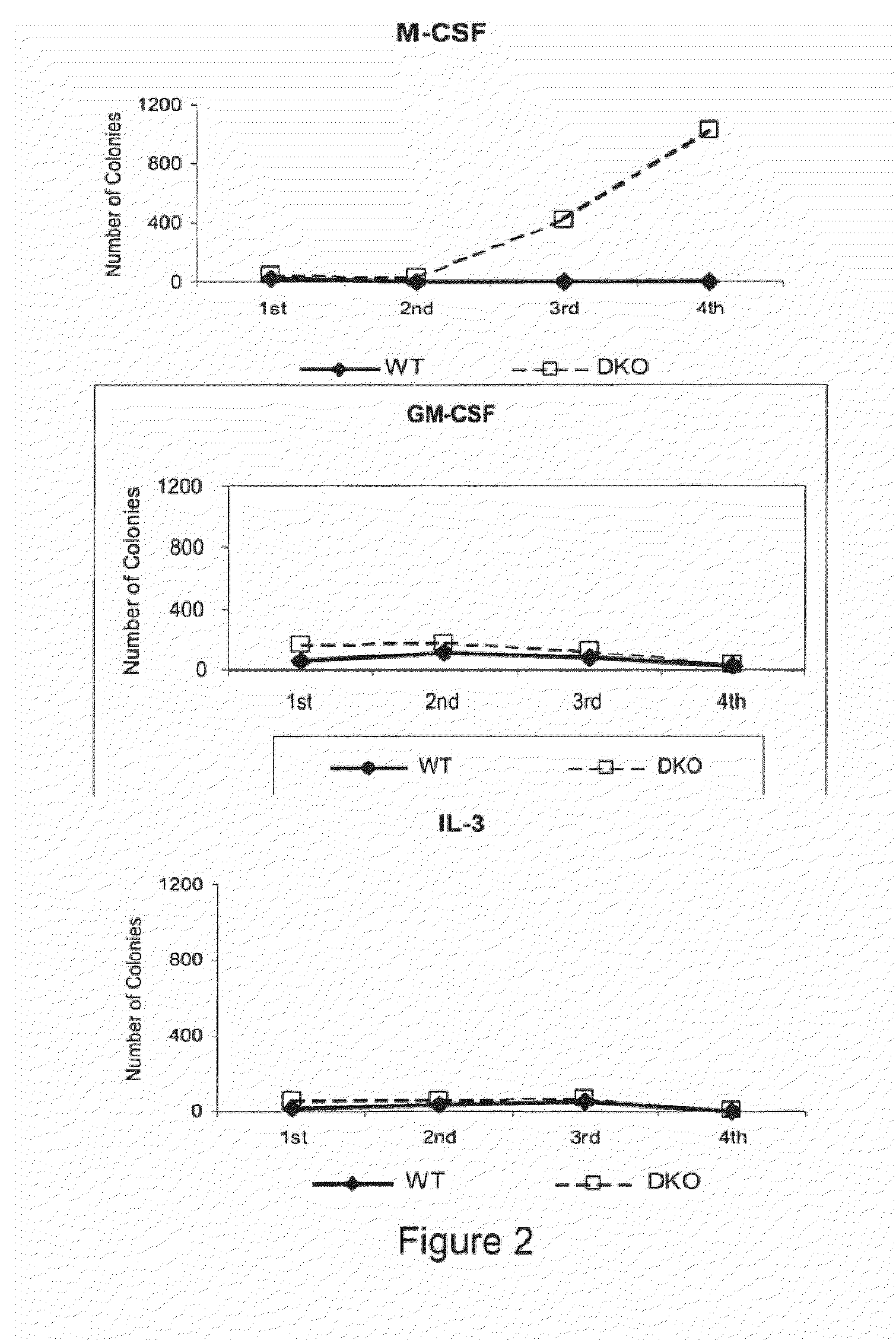Method for Expanding Monocytes
a monocyte and cell technology, applied in the field of monocyte expansion, can solve the problems of not homogeneous, inability to be further expanded in culture, and inability to maintain culture,
- Summary
- Abstract
- Description
- Claims
- Application Information
AI Technical Summary
Benefits of technology
Problems solved by technology
Method used
Image
Examples
example
[0151]Material and Methods
[0152]Mice: We described previously the generation of MafB deficient mice on a 129Sv-C57BL / 6 background and their genotyping by PCR with primers for mafB and gfp, replacing mafB in the knockout allele (Blanchi et al. 2003). The generation of c-Maf deficient mice has also been described (Kim et al. 1999). MafB+ / − and c-Maf+ / − mice were crossed to obtain MafB; c-Maf+ / −; + / − mice, which were intercrossed to obtain MafB; c-Maf− / −; − / − embryos. All experiments were performed in accordance with institutional guidelines using mice maintained under specific pathogen-free conditions.
[0153]Fetal Liver cell preparation: Embryos were collected aseptically at embryonic day E14.5. A single cell suspension was prepared in primary cell medium (IMDM, 20% FCS, 1% penicillin / streptomycin) from the liver of each embryo and stored at 4° C. until the genotype was confirmed by PCR.
[0154]Colony assays: 2×104 fetal liver cells were seeded in semi-solid medium containing MethoCult M...
PUM
| Property | Measurement | Unit |
|---|---|---|
| concentration | aaaaa | aaaaa |
| concentration | aaaaa | aaaaa |
| concentration | aaaaa | aaaaa |
Abstract
Description
Claims
Application Information
 Login to View More
Login to View More - R&D
- Intellectual Property
- Life Sciences
- Materials
- Tech Scout
- Unparalleled Data Quality
- Higher Quality Content
- 60% Fewer Hallucinations
Browse by: Latest US Patents, China's latest patents, Technical Efficacy Thesaurus, Application Domain, Technology Topic, Popular Technical Reports.
© 2025 PatSnap. All rights reserved.Legal|Privacy policy|Modern Slavery Act Transparency Statement|Sitemap|About US| Contact US: help@patsnap.com



